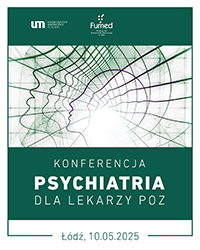Children with monosymptomatic primary nocturnal enuresis – the clinical profile of patients during the first nephrological consultation
 Affiliation and address for correspondence
Affiliation and address for correspondenceIntroduction: Nocturnal enuresis can be diagnosed in a child older than 5 years of age who involuntarily discharges urine in the wrong time, i.e. at night, and in the wrong place, i.e. in bed. Aim: The aim of the study was to analyse the profile of patients who consult the specialist physician with monosymptomatic primary nocturnal enuresis. Material and methods: The data were collected from a questionnaire completed by guardians of children during the first nephrological consultation. The questions concerned the following: family history of nocturnal enuresis, bedwetting intensity, other urinary tract symptoms, a voiding chart and fluid intake record, number of nocturnal enuresis incidents in 14 days, episodes of nocturia, nocturnal diuresis volume, urinary urgency volume and constipation. Moreover, basic anthropometric measurements were taken. The data were analysed and the following values were calculated: average voided volumes, maximum voided volumes, voided volumes before 5 p.m. and 24-hour diuresis. An analogous analysis was conducted with respect to fluid intake. Results: Most patients were males. The family history of nocturnal enuresis was positive in ⅓ of patients. Approximately ⅓ of patients tended to drink fluids directly before bedtime. The number of patients with sporadic nocturnal enuresis (23–45%) was comparable to the number of patients with frequent nocturnal enuresis (28–55%). Nocturnal diuresis suggested nocturnal polyuria in 11 patients (21.6%). Decreased functional bladder capacity was found in almost ¼ of patients (12–23.5%). Conclusions: Monosymptomatic nocturnal enuresis is more common in boys. The family history was positive in ⅓ of patients. Patients and their guardians are not aware of fluid intake restrictions at bedtime. The frequency of nocturnal polyuria and decreased functional bladder capacity is comparable in the investigated patients.











